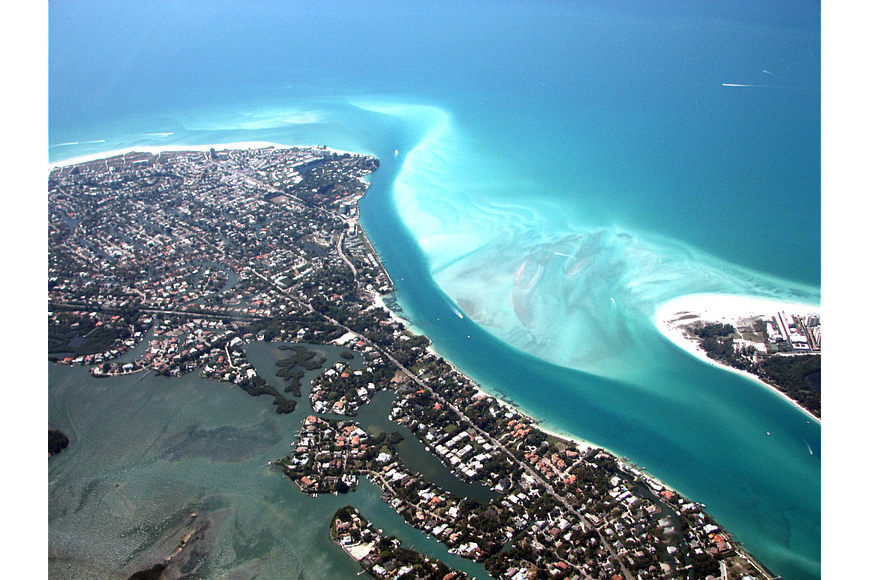- October 23, 2024
-
-
Loading

Loading

More than a year after a state agency announced its intent to permit the proposed dredging of Big Pass, an administrative judge recommended moving forward with the project — as long as the plans are modified to account for some environmental concerns.
Administrative law judge Bram Canter issued a recommended order today that states the Florida Department of Environmental Protection should approve the plans, which would dredge Big Pass to renourish eroded segments of Lido Key. Canter states the approval should be contingent on the DEP prohibiting any dredging in some portions of Big Pass from April through September, a change designed to protect the spawning of spotted seatrout.
The order also recommends limiting the amount of sand the project is authorized to remove from Big Pass. Canter said the permit should allow for the removal of a maximum of 1.3 million cubic yards of sand.
Canter’s order doesn’t bring a conclusion to the dispute over the dredging proposal, a joint effort between the U.S. Army Corps of Engineers and the city of Sarasota. Lido Key residents see the decision as a major victory in their pursuit of a renourished shoreline, but they’re aware Siesta Key residents remain opposed to the plans.
“I’m ecstatic,” said Carl Shoffstall, president of the Lido Key Residents Association. “It’s far from over, but at least this is the first step in the right direction.”
Siesta Key residents, meanwhile, are not going to stop fighting against the project.
“It feels very disappointing, but it’s not over,” said Catherine Luckner, vice president of the Siesta Key Association.
The proposal has been a source of controversy since 2013. In addition to dredging Big Pass, the project calls for the construction of two sand-retaining groins on Lido Key. The plans would allow the Army Corps of Engineers to place 950,000 cubic yards of sand on Lido Key in an initial dredge, with subsequent smaller renourishment projects to replenish lost sand every five years. The permit would be valid for 15 years.
Because Big Pass has never been dredged before, Siesta Key residents have voiced strong opposition to the proposal, fearing the project would harm the southern barrier island’s shoreline.
In March 2017, the Siesta Key Association and Save our Siesta Sands 2 filed an appeal challenging the DEP’s decision with the state’s Division of Administrative Hearings. Following a hearing in December, representatives for the Siesta Key groups, the Lido Key Residents Association, the city of Sarasota, the Army Corps of Engineers and the DEP all submitted proposed conclusions to Canter for consideration in his final recommended order.
In the 39-page order, Canter wrote that the material the DEP considered in its ruling is mostly sufficient to support the proposed dredging. Canter found the appellants did not provide material supporting their claims the project would negatively affect Siesta Key.
“Together with other data and analyses, the results of the (coastal modeling system) model support a finding that the proposed dredging and renourishment would not cause significant adverse impacts,” the order stated.
Canter also said the Siesta Key representatives largely failed to substantiate claims the project would negatively affect fish and wildlife. The sole exception pertained to spotted seatrout, a fish that spawns in Big Pass. Canter cited testimony that said those spawning sites are rare before recommending modifications to the permit designed to protect spotted seatrout.
Canter’s order is still subject to a one more round of input from the parties involved in the case, and the secretary of the DEP will make a final decision on whether to issue the permit. Even if the state issues the permit, there are other questions that must be addressed.
Shoffstall anticipated Siesta Key residents would file a civil suit contesting the project. Luckner confirmed that’s an avenue the Siesta Key Association is considering.
“That’s still there for us, and we’re really counting on the county to weigh in in some responsible way,” Luckner said.
To date, the county has declined to take a position on the proposed dredging.
The Army Corps of Engineers also needs to obtain federal funding to move forward with the dredging, which is estimated to cost $22 million overall.
Luckner said she was shocked by the judge’s recommendation, but she sees opportunities for Siesta residents to prevail going forward. She reiterated her belief that the plans would be detrimental not only for Siesta Key, but for Lido Key, as well.
“We’re kind of heartsick about it, because we do feel strongly that it’s not a good project, and they didn’t do a lot of things right for Lido,” Luckner said.
Lido Key residents, however, offered a strong positive reaction to today’s news.
“This is a big thing for us,” Shoffstall said.
This is a developing story and will be updated as more information becomes available.